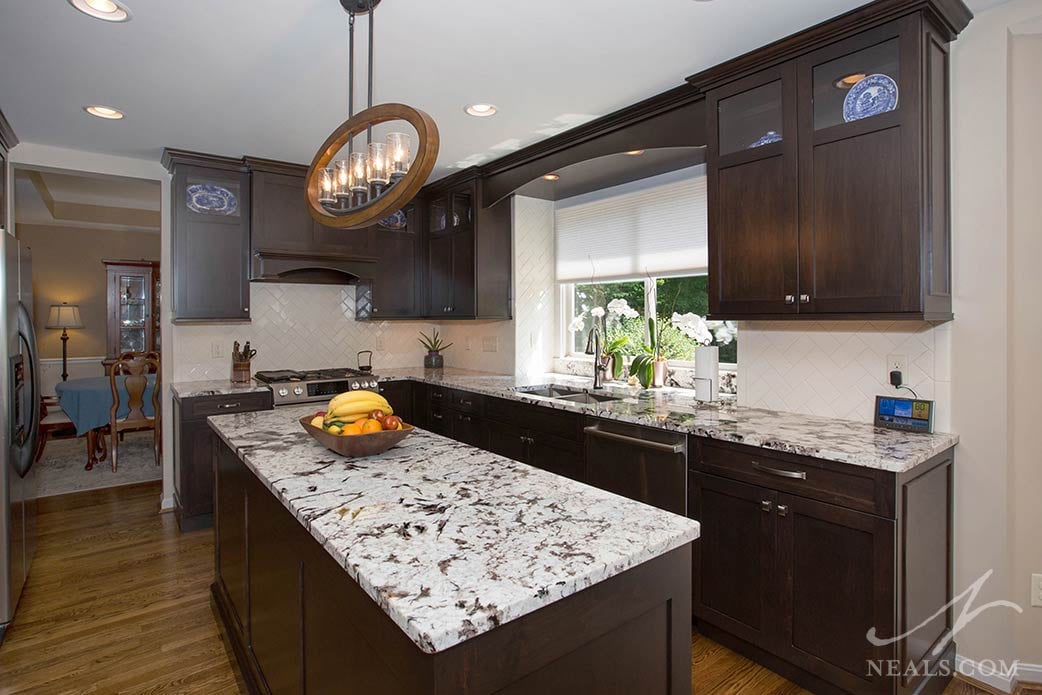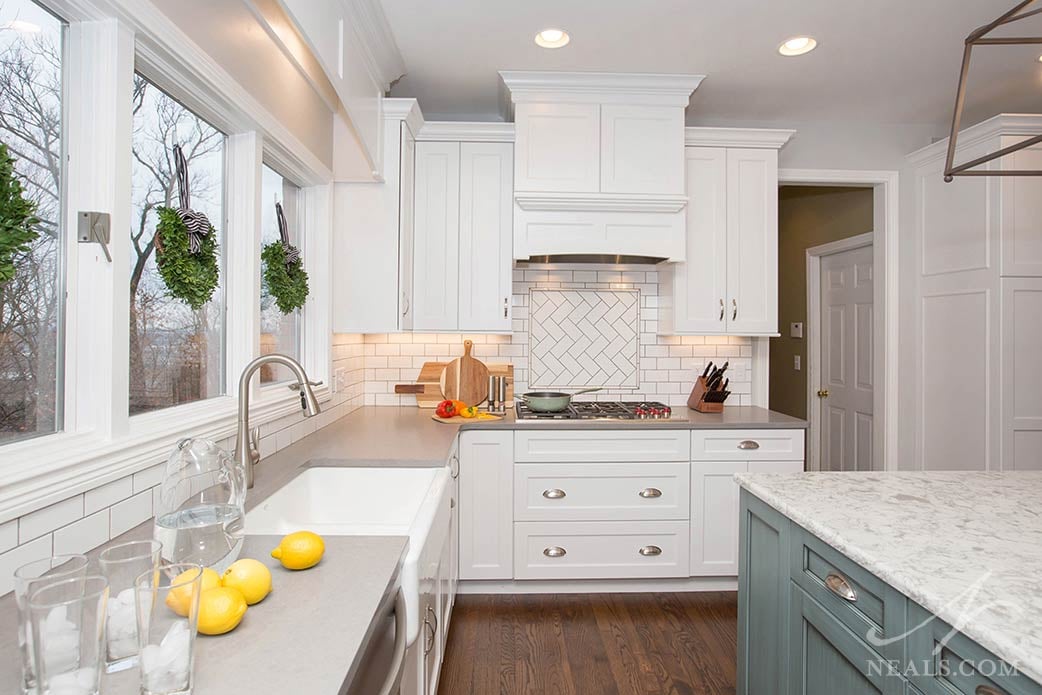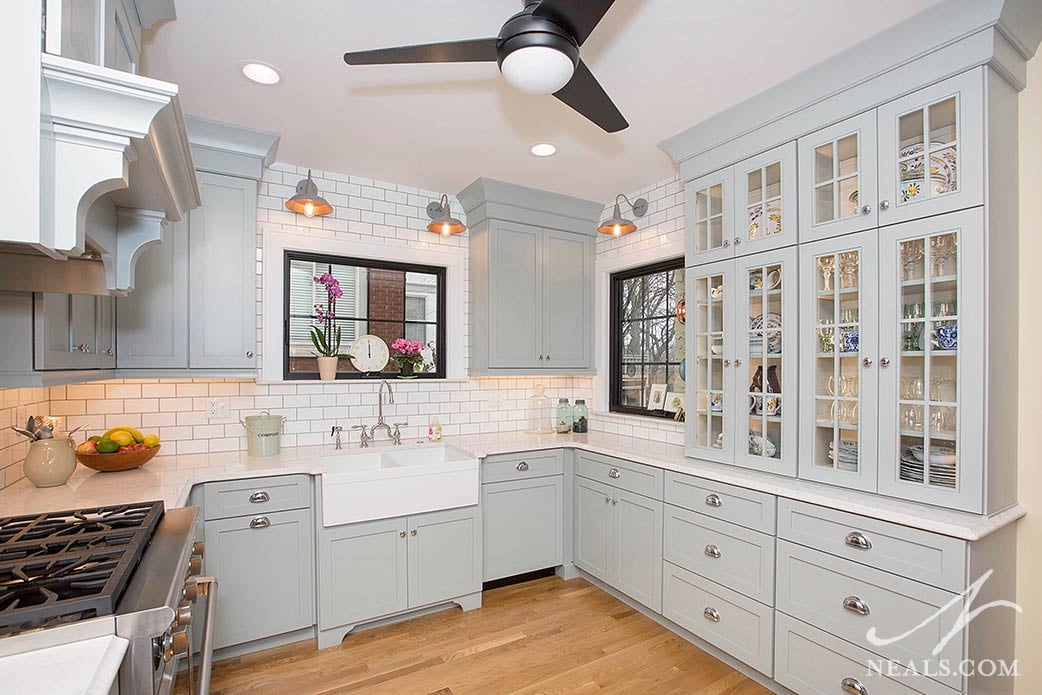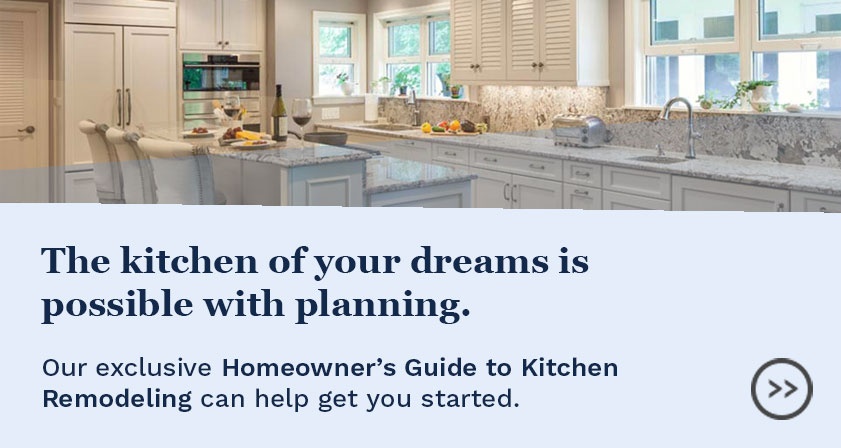The style of cabinet door used in your kitchen is unquestionably the most important design feature. Door style and color set the tone for the space, and provide the backdrop to the unique elements that make one kitchen different from the next. Cabinet doors, drawer fronts, and appliance panels create the core of the kitchen’s visual look. With all the options for the form and style of the door, color, finish, and extra details, it’s easy to be overwhelmed. To help you stay on track, we’ve outlined the three key points to consider when selecting cabinet doors that suit you, your home, and your needs.
Door Style
In general, there are 3 types of door styles: raised panel, recessed panel, and slab or flat panel. Each of these styles brings a unique character that can guide a kitchen into a specific design direction, but they all have the ability to conform to the design style you’re going for in their own ways.
Raised panel doors convey a traditional style. The middle section of the door is raised, creating a groove between the door’s frame and the central panel. This groove creates a clear visual rectangle that defines each door and panel, and creates highlights and shadows that bring depth to the cabinetry. The style leans traditional because they harken back to the American colonial era, when raised panel cabinetry in the home was a sign of wealth since they were more costly to make.
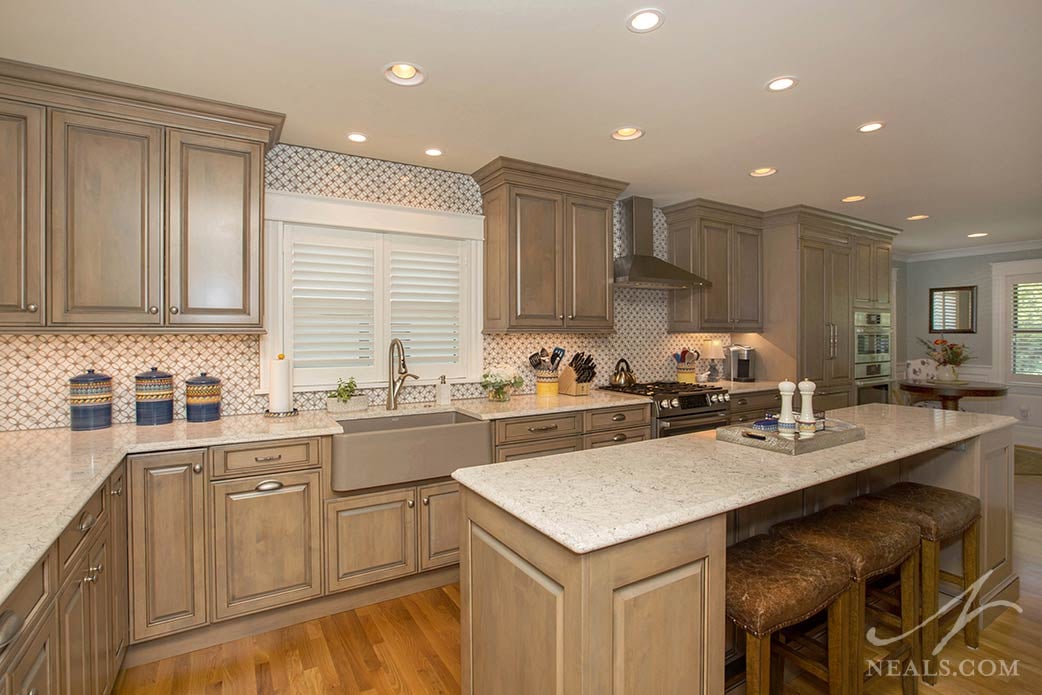
Addition and Kitchen Remodel in Hyde Park
Recessed panel doors, often referred to as “Shaker-style”, are as timeless as they come. Introduced as a cabinetry style at least as far back as the 1700’s, doors with simple raised frames were ubiquitous by the 1930’s, and are still popular today. With a straight-forward design appeal, recessed panel cabinet doors can support a wide range of style details and can go either traditional or contemporary which makes them a go-to option for transitional style kitchens or for homeowners who are not comfortable committing to a specific style.
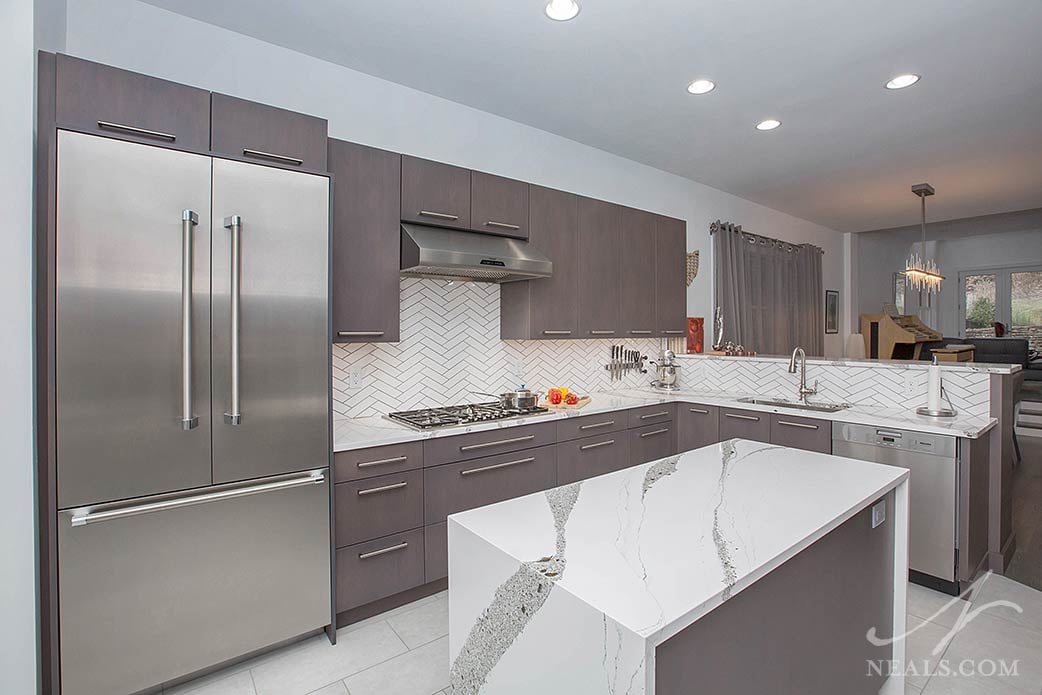
Kitchen Remodel in Over-the-Rhine
Slab or flat doors, those with no frames, grooves or other 3-dimensional detailing, are fairly common in modern kitchen design, and feel instantly contemporary. Color and finish are critical for flat panel doors, as well as how they are paired with hardware. This is because on their own, they have no set style. Slab doors are perfect for homeowners that desire a minimal appearance.
Color and Finish
Each wood type used for kitchen cabinetry has its own character and features that can dictate whether a stain or a paint is best. Cherry, walnut, maple, and pine, for example, work well with stain because the natural lines and coloration in the panels create depth while still offering consistency. Medium-density fiberboard, or MDF, is quite often used for cabinetry that will be painted because the color will be consistent across the entire surface. Work with your designer to determine which material is best suited to your needs and budget.
Generally speaking, stains will offer a natural selection of tones, though bold color options are available. Stain will allow the natural grain of the wood to show. Paint is opaque and will conceal the grain. Each cabinetry manufacturer has its own palette of paint options, but custom paint colors can also be selected and applied by a professional painter or at the cabinetry factory for custom orders.
White finishes in the kitchen have been popular since the 1930’s, when a spotless kitchen was a cultural standard. Whether on a raised, recessed or flat panel door, white is a timeless option, and can be used for almost any design style.
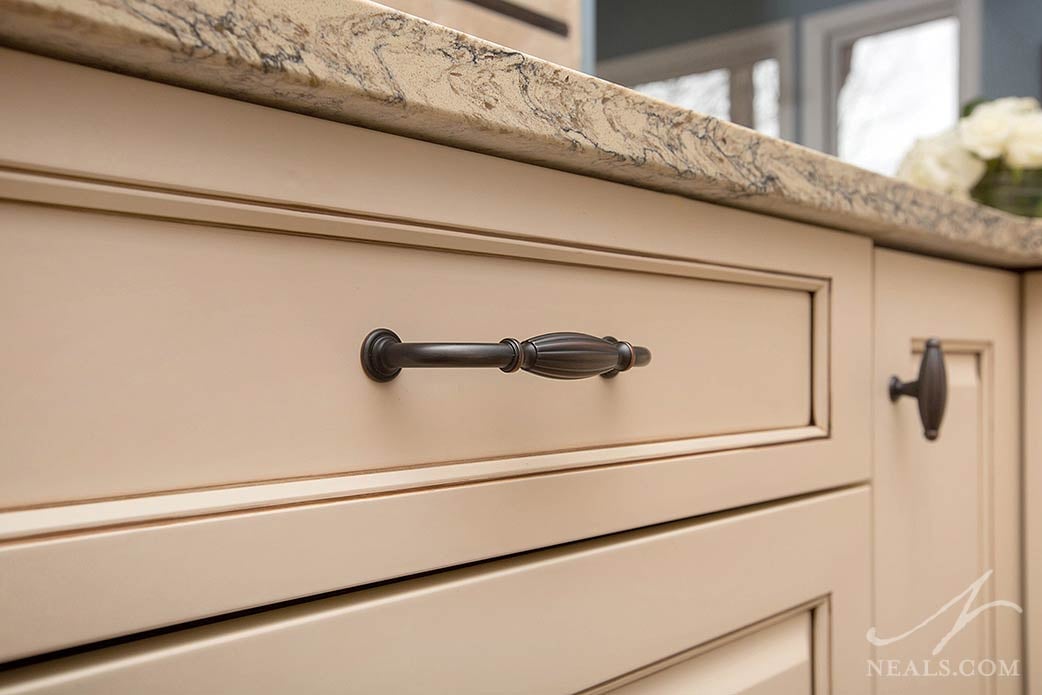
Glaze Finish in a Kitchen Remodel in Montgomery
Glaze, vintage applications, and distressing are additional ways to make a cabinet door unique. Glaze is a thin coating with tints of color that not only effects the colors underneath but also pools into grooves and recesses, making them stand out. In vintage or heirloom finishes, the stain or paint application is applied by hand, which creates both variation in how it’s coated as well as the unmistakable lines of a brush mark. Distressing is a careful process that adds a variety of markings and wear to cabinets to prevent them from looking new. This process is especially ideal for traditional, farmhouse, or rustic design. Stained and painted cabinetry will show distressing differently.
Door Details
Once the style and finish of the cabinet door are determined by choosing their style and color, the doors can be taken even further by including decorative trims and inserts. Molding-applied doors have extra trim that is attached to the door, typically around existing construction features, such as the recessed or raised panel, to give it more dimension and character.
To create variety in the cabinetry, glass can be added to door fronts. Many glass patterns and mullion styles (the spacers between the panels of glass) are available. Glass can be clear, frosted, vintage (with imperfections), or leaded. It’s also possible to include rattan, metal, exotic hardwoods, and veneers in the cabinetry. These options are typically manufacturer specific and can add significantly to the cost, so check with your designer to discuss what inserts and customizations are available in your budget range.
NOTE: This post was originally published April 14, 2015. It was last updated on October 13, 2020 with new images and minor text edits for clarity and accuracy.


